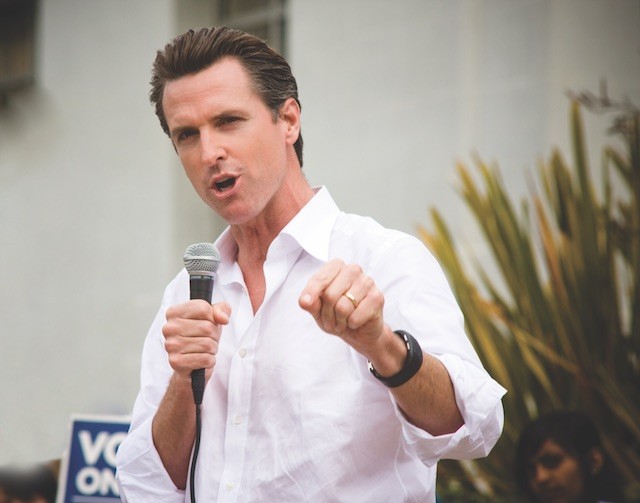After 103 years of conditional prohibitions and almost two million arrests, California has joined the growing list of states to liberalize their statutes and permit adults to enjoy cannabis without a medical excuse.
Now the hard work begins as the state legislature moves to establish precisely how the post-prohibition regulatory landscape will evolve.
On November 8, fifty-six percent of California voters approved the Adult Use of Marijuana Act, called Proposition 64 on the ballot, opening a new era of tolerance. Before the law takes effect, state and local authorities must create a regulatory framework to manage how commercial cannabis fits alongside its medical forerunner.
The language of Prop. 64 is detailed—the initiative runs sixty-three pages—but confusion already has begun over taxation and the retail relationship between medical and recreational sales.
Other critical issues—including the environment, fish and wildlife, testing, delivery, track-and-trace, advertising, and driving under the influence—must be sorted out by legislative leadership and the governor. Cities and counties must also prepare policies and local ordinances.
“There are a million people right now—literally one million people in the state of California—whose lives have been profoundly changed,” Lieutenant Governor Gavin Newsom said.
Newsom was the only high-ranking official to publicly support Prop. 64, which received minimal backing from California politicians. Only a handful of state assembly and senate members publicly endorsed the initiative, and 90 percent of the state’s congressional delegation refused to take a stand. Governor Jerry Brown ducked the question and made no endorsement.
As demonstrated by their silence on adult use, most California political figures considered cannabis regulation a low priority in the months leading up to the election. While 2016 was a relatively quiet year on the cannabis legislation front, 2017 will be busy as the assembly and state senate work to hammer the voters’ decision into something manageable.
The new adult-use laws take effect in January 2018 and largely will mirror work presently being done by state agency heads and bureaucrats on the medical cannabis front. In the Sacramento offices that create policy for public safety, agriculture, health, wildlife, and the environment, authorities have spent the past year meeting with stakeholders and trying to steer a reasonable path to cannabis regulation.
Unfortunately, California has an awful history of managing the regulatory details of cannabis. The agricultural product known as hemp, Indian hemp, and locoweed was included in an amendment to the California Poison Act of 1913, which restricted the sale of cocaine, opium, and other narcotics. Anonymous legislative authors in Sacramento miswrote the amendment and accidentally created a pharmaceutical loophole for locoweed. The legislature closed the loophole in 1915.
The Poison Act never worked in regard to cannabis. By 1996, more than 1.85 million people had been arrested for marijuana offenses in the state. Voters that year decriminalized cannabis for medical use and approved Prop. 215, the Compassionate Use Act.
Despite popular sentiment for the act’s approval, the legislature refused to act. No regulatory protocols were forthcoming from Sacramento until 2015. Cities and counties were left to manage the booming enterprises of commercial cultivation and retail sales on their own for two decades.
“Twenty years ago, we started the job with Proposition 215, and tonight we finished the job,” Dale Gieringer, California director for the National Organization for the Reform of Marijuana Laws (NORML), said after Prop. 64 votes were counted.
The state is trying not to repeat the legacy of denial that historically has accompanied legislative efforts to reform California’s cannabis laws.
After nineteen years of inaction, politicians led by assembly members Rob Bonta (D-Oakland) and Jim Wood (D-Healdsburg) and state senator Mike McGuire (D-Healdsburg) fashioned a coalition to create the state’s first legislative package to regulate medical cannabis.
They spent months on the effort, building unprecedented bipartisan support and gathering input from cultivators, dispensary operators, and patients in addition to law enforcement, organized labor, and local governments. The work resulted in a trio of successful bills collectively called the Medical Marijuana Regulation and Safety Act. Today, the word “cannabis” has been substituted for “marijuana.”
Still, the effort wasn’t easy. The 2015 coalition almost fell apart over squabbles involving legislative egos and objections from local governments. Back-room intervention from Governor Brown’s office saved the package, and Brown signed the act into law.
Even then, legislative staff made a critical mistake in their rush to write the language under capital deadlines. They inadvertently made the act a threat to cities by including imprecise verbiage that allowed the state to dictate local cannabis policies.
The foundation of the 2015 legislation, like Prop. 64, gives cities and counties control over permits for all commercial cannabis activities. But the error in language sent more than 300 local governments scrambling to write ordinances banning cannabis cultivation, delivery, and retail sales in various degrees.
The legislative language was cleaned up in 2016, but cities and counties continued to panic over the challenges of regulating cannabis. The panic has not subsided since the passage of Prop. 64.
Panic in local governments typically translates to prohibition, and that’s been the result in dozens of communities since voters approved Prop. 64. Suburban communities from San Diego to Santa Barbara and the Bay Area have been especially quick to write new restrictive ordinances.

Legislative errors and local governments’ fear of cannabis proliferation continue to be a big story in the aftermath of Prop. 64, as does an eagerness among cities and counties to cash in on cannabis with special taxes.
More than 50 communities have approved taxes on cannabis, with tariffs ranging from 3 to 18 percent. An outlier was Santa Barbara, where voters placed a 20-percent tax on marijuana, which will follow a 15-percent state tax under the adult-use initiative.
The Inland Empire continued to rebuild its economy around cannabis cultivation. Adelanto, Cathedral City, and Coachella all approved new taxes on marijuana growers, as did Monterey. Long Beach voters repealed a ban on dispensaries and will allow thirty-two stores.
Other communities have been more cautious. Voters in Calaveras and Yuba counties rejected industry-led ballot measures to expand cultivation. Even in Mendocino County, home to legacy growers and some of the world’s most renowned cannabis, voters elected to limit the number of permits local government would issue for cultivation, retail operations, and similar businesses.
The law “was written by a small group of marijuana growers and dispensary interests to protect their interests,” County Supervisor John McCowen said.










